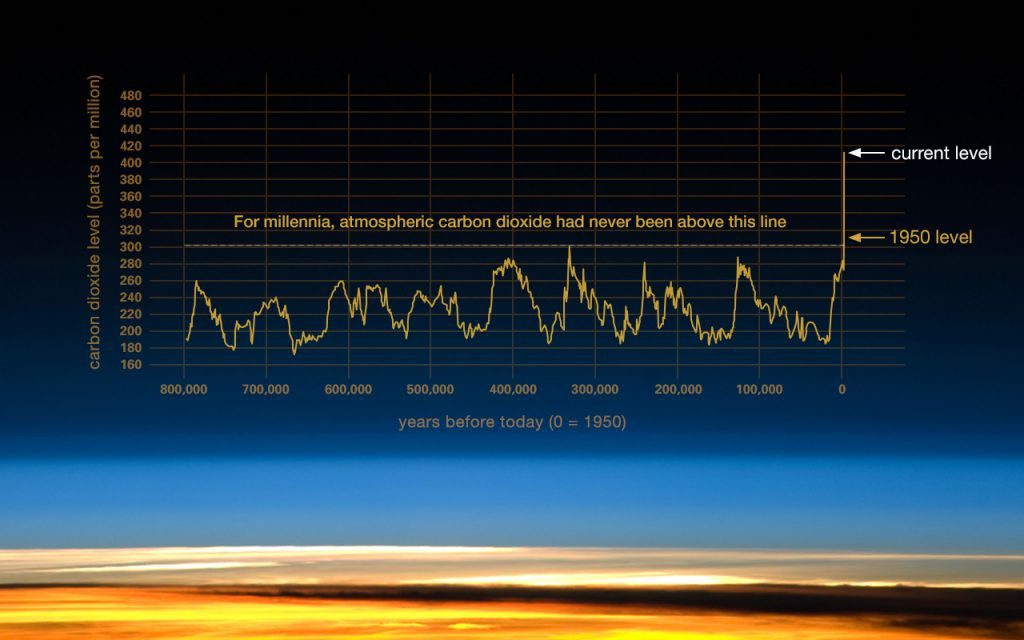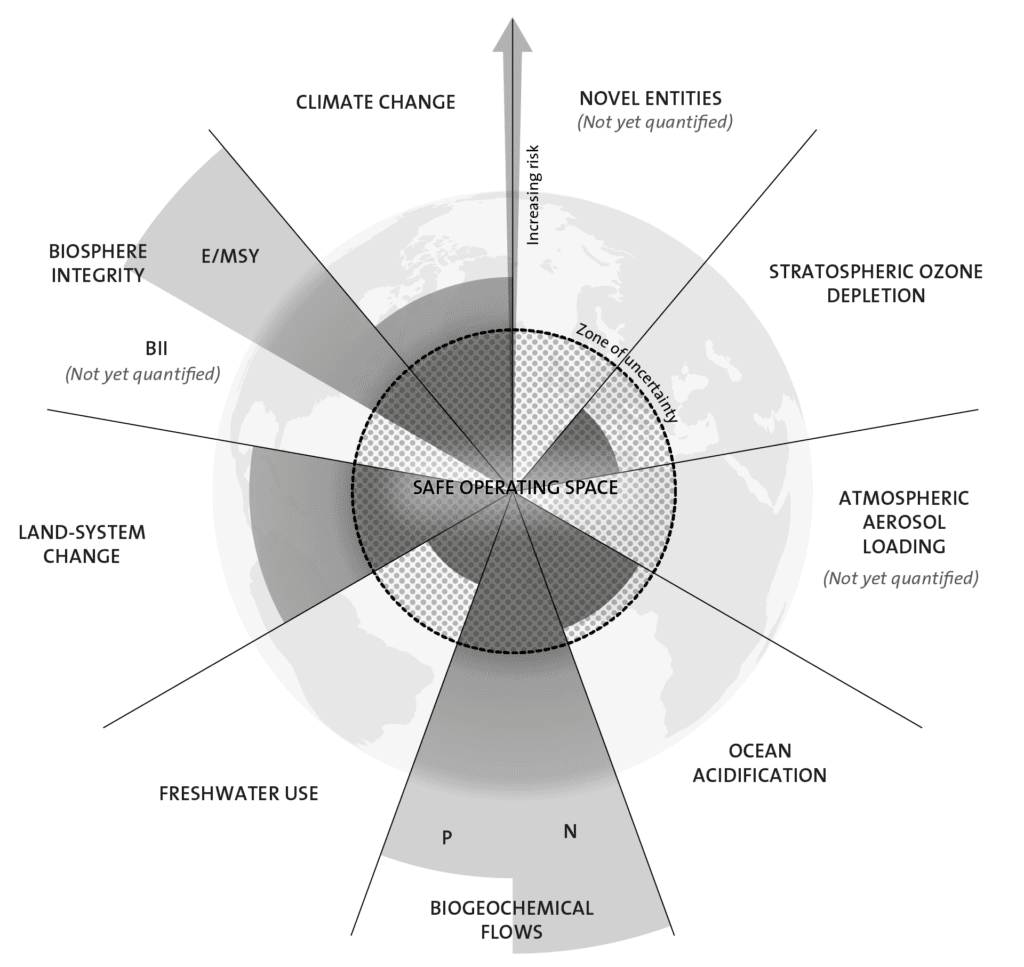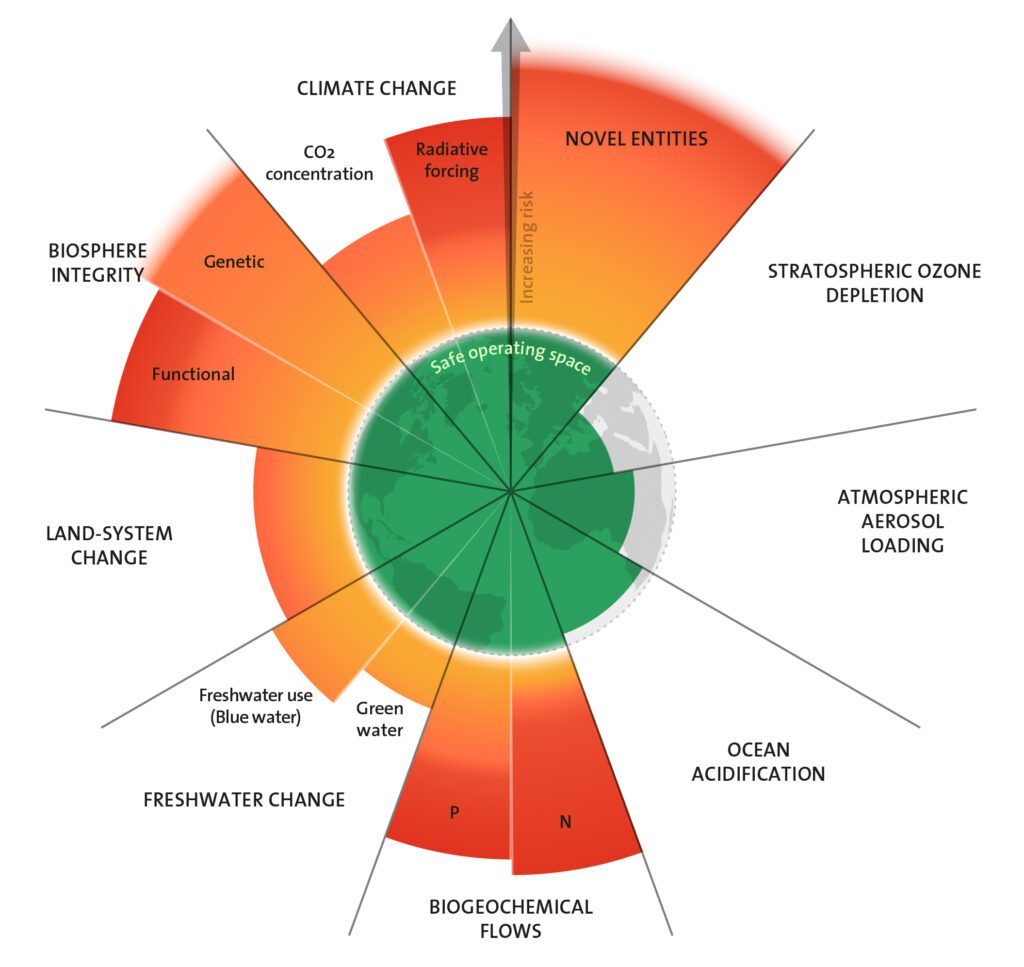How human activities are changing planet Earth
We are 8 billion humans on this planet right now. We are exploiting so much of the resources Mother Earth provides that we are damaging the only habitable planet we know – our common house.
We, modern humans, have existed for a long time on this planet (hundreds of thousands of years), and yet, it was “just” around 12,000 years ago that we started to develop our “advanced” civilization (e.g., agriculture about 8000 years ago). But why did we thrive on Earth “only” during the past 12,000 years?
The Holocene
Scientists say it was because of an unprecedented period of stability on Earth. During the past 12,000 years, our planet’s surface temperature varied only +/- 1° Celsius above or below the average for that period. As a result, all life on Earth thrived. This era is known as Holocene, the current (interglacial) era.
Why is it important to understand and recognize the stability of the Holocene?
Because if we (modern humans) want to continue to thrive on Earth, we need a stable & resilient planet. And this is the assumption that scientists make: to understand the characteristic of the Holocene, to define what it means to stay in that state and not to push the planet over an irreversible and unknown change.
And when we look at the population increase over the Holocene, we find that we were just a few million people 10,000 years ago. The explosion of the population did not start long ago. According to OurWorldinData on population, we hit 1 billion people in 1805, 2.54 billion people in 1950, and 8 billion today.
The Industrial Revolution
What happened over the past two centuries – given that we hit 1 billion in the early 1800s and today we are 8 billion people and increasing? What changed? In a few words: the Industrial Revolution. We invented new technologies and ways of living and working that transformed our societies. And it’s during this time that we see the advent of fossil fuels; we started to burn fossil fuels producing carbon dioxide (CO2) as a by-product.
Over the past two centuries -in just two centuries- humanity has dramatically increased greenhouse gas concentrations in the atmosphere. For the first time, the concentration of CO2 in the atmosphere is over 300 parts per million (ppm). At the time of writing, we are past 417 ppm.

We know that there is a “near-linear relationship between cumulative anthropogenic CO2 emissions and the global warming they cause”. The IPCC 2021 Climate Report on Physical Science Basis (SPM-36) tells that “Each 1000 GtCO2 of cumulative CO2 emissions is assessed to likely cause a 0.27°C to 0.63°C increase in global surface temperature with a best estimate of 0.45°C.”
Therefore, for every 1000GtCO2 we emit, the planet warms by 0.45°C. In simple words, the more CO2 we add to the atmosphere, the more we warm our planet. We are already past 1.2°C of warming (and going up).
Has this ever happened?
Our planet has been warmer than today, mainly due to changes in the Earth’s orbit. Going back 130,000 years ago, we find a period called Eemian (the interglacial period before the Holocene) when the temperature on Earth was 2 degrees Celsius warmer than today, and sea levels were 4-6 meters higher than today.
Let’s stop for a minute. 4-6 meters higher than today.
And we did not have the modern societies we have today. We did not add massive amounts of GHG gases to warm the atmosphere.
Our climate is changing
The science is pretty clear and irrefutable. We know that we (humans) are causing global warming by releasing greenhouse gases into the atmosphere, especially carbon dioxide (CO2) that we emit when we burn fossil fuels. As a result, our climate is changing.
The consequences? We are already experiencing extreme weather events: floods, fires, heatwaves, and droughts. And we have sea-level rise and ocean acidification.
Climate change alone can put at risk the stability of our planet and the stability of our societies and push the Earth over a point of non-return. As scientists would say: Climate change is a planetary boundary.
Is that all? No.
In addition to burning fossil fuels, we are cutting down forests to make space for more food (the majority to feed animals) while destroying the habitat of species; we are depleting our freshwater supplies; we are polluting the air, the land, the water. And we can even find microplastic in the water we drink!
The Planetary Boundaries Framework
In 2009, prof. Johan Rockström and a team of international scientists published the Planetary Boundaries Framework (updated in 2015), which defined a “safe operating space for humanity” (the conditions of the Holocene). It outlines boundaries we don’t want to trespass if we want to inhabit a stable and resilient planet.
For each boundary (which are nine processes that regulate the Earth’s system), scientists identified control variables to define thresholds quantitatively. Due to the complexity and interaction of Earth’s processes, scientists have defined ranges rather than single thresholds – called “zones of uncertainty”, and they have positioned the boundary at the lower end of the scientific uncertainty (according to the precautionary principle). For example, for the Climate Change boundary, one of the control variables is the atmospheric CO2 concentration in ppm, with a range from 350 ppm (this is the boundary, the lower end of the uncertainty) to 450 ppm. Today we have crossed the safe operating space for Climate Change.
When we cross a boundary, we can potentially see abrupt changes (tipping points) occurring.
The planetary boundaries
The iconic graph below (the 2015 version to illustrate the concept) represents the Earth, divided into risk areas called “planetary boundaries.” The safe operating space is at the center, and as we cross it, we walk into a zone of uncertainty with increasing risk (see the arrow) of abrupt, irreversible changes.

The nine planetary boundaries
- Climate change
- Novel entities (chemical pollution)
- Stratospheric ozone depletion
- Atmospheric aerosol loading (air pollution)
- Ocean acidification
- Biogeochemical flows of nitrogen (N) & phosphorus (P)
- Freshwater use – renamed Freshwater change (see below)
- Land-system change
- Biosphere Integrity (biodiversity).
Three planetary boundaries have evidence of large scale tipping points: climate change, ozone depletion, and ocean acidification; four boundaries operate at a smaller scale but regulate the Earth system: biosphere integrity (biodiversity), land-system change, freshwater change, biogeochemical flows (Phosphorus, P & Nitrogen, N); and two boundaries are heavily caused by us (humans): atmosphere aerosol loading (air pollution), and novel entities (chemical pollution).
The latest updates
Here is the latest visualization of the planetary boundaries. In January 2022, we crossed the novel entities boundary which includes plastic and other manmade chemicals. In April 2022 scientists reassessed the planetary boundary for freshwater including “green water” – that’s the water available to plants, in addition to the original freshwater boundary – the “blue water”, focused on the extraction of water in rivers, lakes, and groundwater. Green water is now considered to be outside the safe zone of Holocene-like conditions.

Humanity is already existing outside the safe operating space for six boundaries:
- Climate change
- Freshwater change
- Biogeochemical flows (nitrogen and phosphorus imbalance)
- Novel entities (chemical pollution)
- Land-system change
- Biosphere integrity (biodiversity).
So scientists tell us that if we cross those boundaries, we are putting our planet at risk of abrupt & irreversible changes. And all the interconnections are yet to be understood.
What is clear is that we are putting our planet and our societies at risk.
“We have the knowledge, technology, and we know it makes social and economic sense. We are all on this journey together, this is our mission, to protect our children’s future!”
Prof. Dr. Johan Rockström
In the video below, Prof. Dr Johan Rockström explains the multiplying risks of transgressing planet boundaries and how we have reached a climate emergency.
.
The reality & what we can do
We saw an increase in 2021 (according to the IEA, global energy-related carbon dioxide emissions rose by 6% in 2021). In March 2022, we registered extreme heatwaves at both of Earth’s poles. We keep going with our linear economies with slow progress towards circular models. 2023 was the warmest year ever recorded. Reduction of CO2 emissions is not happening.
But we can do something about it.
This can be a historical moment to transform our societies. To shift our focus from unsustainable pathways to sustainable models where we think about the impacts of our actions on people and the planet.
It’s not too late to take action. But we need urgent action. And we need everyone on board.
